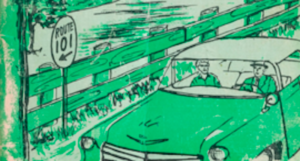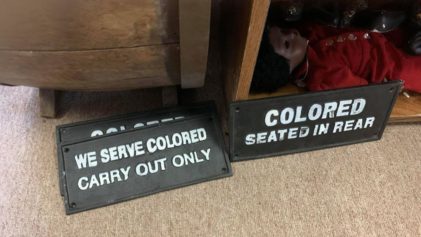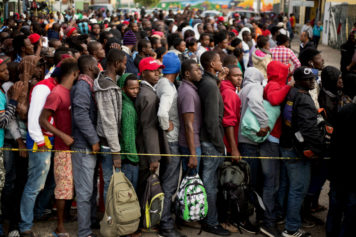It is a window into the Jim Crow past. During the days of segregation, when Black travelers were not welcome in whites-only establishments, there was the Green Book. Published from 1936 to 1966, the guide assisted Black motorists in finding hotels, restaurants and other businesses that were friendly to African-Americans, helping them avoid racial harassment, arrest, bodily injury and possibly even death.
As was reported in Raw Story, the Schomburg Center for Research in Black Culture has posted all but two of the editions online. Victor Green, who worked for the post office, began publishing the guides from his New York City apartment after he and his wife decided to check out Black-friendly establishments on their way to a trip to visit relatives in Virginia.
“The idea crystallized when, not only himself but several friends and acquaintances complained of the difficulties encountered; oftentimes painful embarrassments suffered which ruined a vacation or business trip,” wrote Novera C. Dashiell in the spring 1956 edition.
“The white traveler has had no difficulty in getting accommodations, but with the Negro it has been different,” read the introduction to the 1956 edition. “He, before the advent of a Negro travel guide, had to depend on word of mouth, and many times accommodations were not available.”
“It’s not just which places are clean and which places serve good food — it’s places that you would be welcomed and you would be safe,” said Maira Liriano, associate chief librarian at the Schomburg Center, of the once popular books.
“There will be a day sometime in the near future when this guide will not have to be published,” Green wrote in 1948. Although the Green Book is a piece of history, does it need to be resurrected? Is America, and certain parts of the world, so unsafe and hostile towards Black people that, absent an official travel advisory, should we not know where it is safe or treacherous to travel?
We know of some of the countries that have a track record of hostility towards folks of a darker hue, such as Italy, where Black tourists have faced bad treatment, or China, where Blacks are regarded as poor and uneducated. In Germany, Black tourists are advised to avoid the eastern part of the country, and Russia has experienced violence against visitors of African descent, even as some of the country’s greatest leaders, such as writer Alexandre Pushkin and Major-General Ibrahim Petrovich Hannibal were Black.
For Black immigrants, Saudi Arabia is regarded as hostile territory, while Israel regards African migrants as infiltrators, as they, as well as Ethiopian Israeli Jews, are subjected to police brutality, racial discrimination and vigilante mob violence.
But what of the United States, today, in the 21st century? Certainly, there are many parts of America that are unsafe for Black families to travel. The most recent example is South Carolina, where this year, a fleeing Black man named Walter Scott was fatally shot by police in North Charleston, and where Dylann Roof gunned down nine people at the Emanuel AME Church in Charleston. And just days ago, a 16-year-old Black girl was violently assaulted by a sheriff’s deputy at a high school in Columbia. Although the Confederate flag was removed from the state capitol, the spirit of the Dixie lives on, unfortunately.
Meanwhile, in states such as Alabama and North Carolina, white nationalists are attempting to run a Jim Crow style-operation by preventing Black people from voting. And as Eddie Murphy once said, “You better not go to Texas”— it still holds true today. Sandra Bland was found dead in a Waller County jail cell, days after a bogus traffic stop, and a Black councilman in Prairie View, the town where Bland was arrested, was stunned by a Taser outside his home. Further, earlier this year in the Dallas suburb of McKinney, white police broke up a pool party and manhandled a Black teenage girl in a bathing suit.
But let us not forget the St. Louis area, where over a year ago an unarmed 18-year-old, Michael Brown, was shot to death by a police officer, precipitating a Black protest movement against police violence. Today, the St. Louis area is plagued by Black church arsons.
Throughout the nation, as the Southern Poverty Law Center aptly notes, there are hundreds of hate groups operating, such as the 72 active Ku Klux Klan chapters, 142 neo-Nazi organizations, and neo-Confederate groups. Perhaps it is time to bring back the Green Book—in the original domestic and a new international edition, just for good measure.
Is there no safe haven for Black folks these days?



